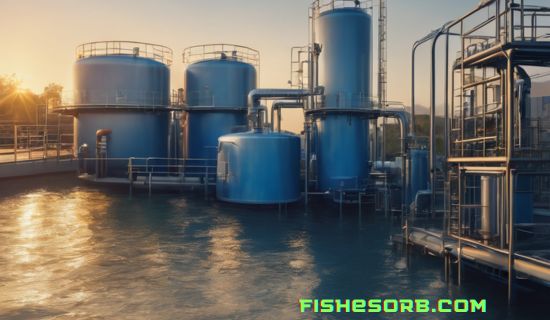Water is the essence of life, and ensuring its purity is paramount to our well-being. In this comprehensive guide, we’ll delve into the intricacies of water treatments, exploring its importance, methods, challenges, and future trends.
I. Introduction
Water treatments is a crucial process that safeguards our health and the environment. As we turn on the tap, the journey of water from source to consumption involves intricate processes to eliminate contaminants. This article aims to shed light on the multifaceted world of water treatments.
II. The Basics of Water Treatment
Defining Water Treatments
At its core, water treatments involves the removal of impurities to make water safe for consumption. This process is not only about meeting regulatory standards but also ensuring the well-being of communities.

Primary Goals of Water Treatments
The primary objectives include removing physical, chemical, and biological contaminants, providing safe drinking water, and safeguarding aquatic ecosystems.
Different Types of Contaminants
Water can harbor a variety of contaminants, from sediments to microorganisms. Understanding these is crucial for tailoring effective treatment methods.
III. Importance of Clean Water
Clean water is a fundamental requirement for a healthy society. Beyond personal health, the absence of water treatments has severe consequences for the environment, affecting aquatic life and ecosystems.
IV. Common Water Treatment Methods
Filtration Techniques
Filtration involves the physical removal of impurities using porous materials. Methods range from simple sand filtration to advanced membrane technologies.
Chemical Treatment Processes
Chemical treatments use substances to neutralize or remove contaminants. Chlorination and ozonation are common methods employed in water treatments plants.
Emerging Technologies in Water Treatment
Innovations like nanotechnology and advanced oxidation processes are shaping the future of water treatments, offering more efficient and sustainable solutions.

V. Understanding Water Quality Standards
Criteria for Safe Drinking Water
Regulatory bodies establish criteria for safe drinking water, considering factors such as microbial content, chemical concentrations, and physical properties.
Regulatory Bodies Overseeing Water Quality
Organizations like the EPA set and enforce water quality standards, ensuring compliance with regulations to protect public health.
VI. Challenges in Water Treatment
Addressing challenges in water treatments, such as aging infrastructure, emerging contaminants, and climate change, requires constant innovation and collaboration within the industry.
VII. Sustainable Water Treatment Practices
Sustainability is becoming a focal point in water treatment. From energy-efficient processes to recycling waste by-products, the industry is evolving to minimize its environmental footprint.

VIII. Residential Water Treatment Systems
Overview of Water Treatments Options for Homes
Homeowners can choose from various systems like water softeners, reverse osmosis, and point-of-use filters, depending on their specific needs.
Factors to Consider When Choosing a System
Considerations include water quality, installation requirements, and maintenance costs. Selecting the right system ensures the delivery of clean and safe water.
IX. Industrial Applications of Water Treatment
Water Treatment in Manufacturing Processes
Industries rely on water for various processes, and effective treatments is crucial to prevent environmental pollution and ensure sustainable production.
Importance of Industrial Water Recycling
Implementing water recycling practices in industries minimizes water consumption and reduces the impact on local water sources.

X. Impact of Technology on Water Treatment
Revolutionizing Water Treatment
Technology is transforming water treatments through automation, real-time monitoring, and data-driven decision-making, enhancing efficiency and reliability.
Automation and Data-Driven Approaches
Automated systems streamline processes, and data analytics provide valuable insights, allowing for proactive maintenance and optimization.
XI. Case Studies: Successful Water Treatment Projects
Real-World Examples of Effective Water Treatment
Examining successful projects highlights the positive outcomes of strategic water treatments initiatives, showcasing the potential for replicable solutions.

Showcasing Positive Environmental Outcomes
Successful water treatments not only ensures safe water but also contributes to environmental conservation, protecting ecosystems and biodiversity.
XII. Future Trends in Water Treatment
Predicting the Future of Water Treatment Technology
Anticipated advancements include decentralized water treatments, advanced sensor technologies, and increased reliance on renewable energy sources.
Anticipated Advancements in the Industry
Continuous research and development are paving the way for breakthroughs that will shape the future of water treatments, making it more efficient and sustainable.
XIII. Public Awareness and Education
The Role of Public Awareness
Educating the public on the importance of water treatments fosters a sense of responsibility and encourages waters conservation.
Educational Initiatives for Sustainable Water Use
School programs, community workshops, and online resources play a vital role in promoting water-conscious behavior and responsible water use.

XIV. Tips for Choosing a Water Treatment Provider
Factors to Consider When Selecting a Water Treatment Service
From evaluating certification to assessing customer reviews, several factors guide the selection of a reliable water treatments provider.
Questions to Ask Potential Providers
Asking pertinent questions ensures transparency and helps consumers make informed decisions about the services they choose.
XV. Conclusion
In conclusion, water treatments is a complex yet vital process that ensures the availability of clean and safe water for everyone. Embracing sustainable practices and leveraging technological advancements will shape the future of this critical industry.



sildenafil 110 mg capsule